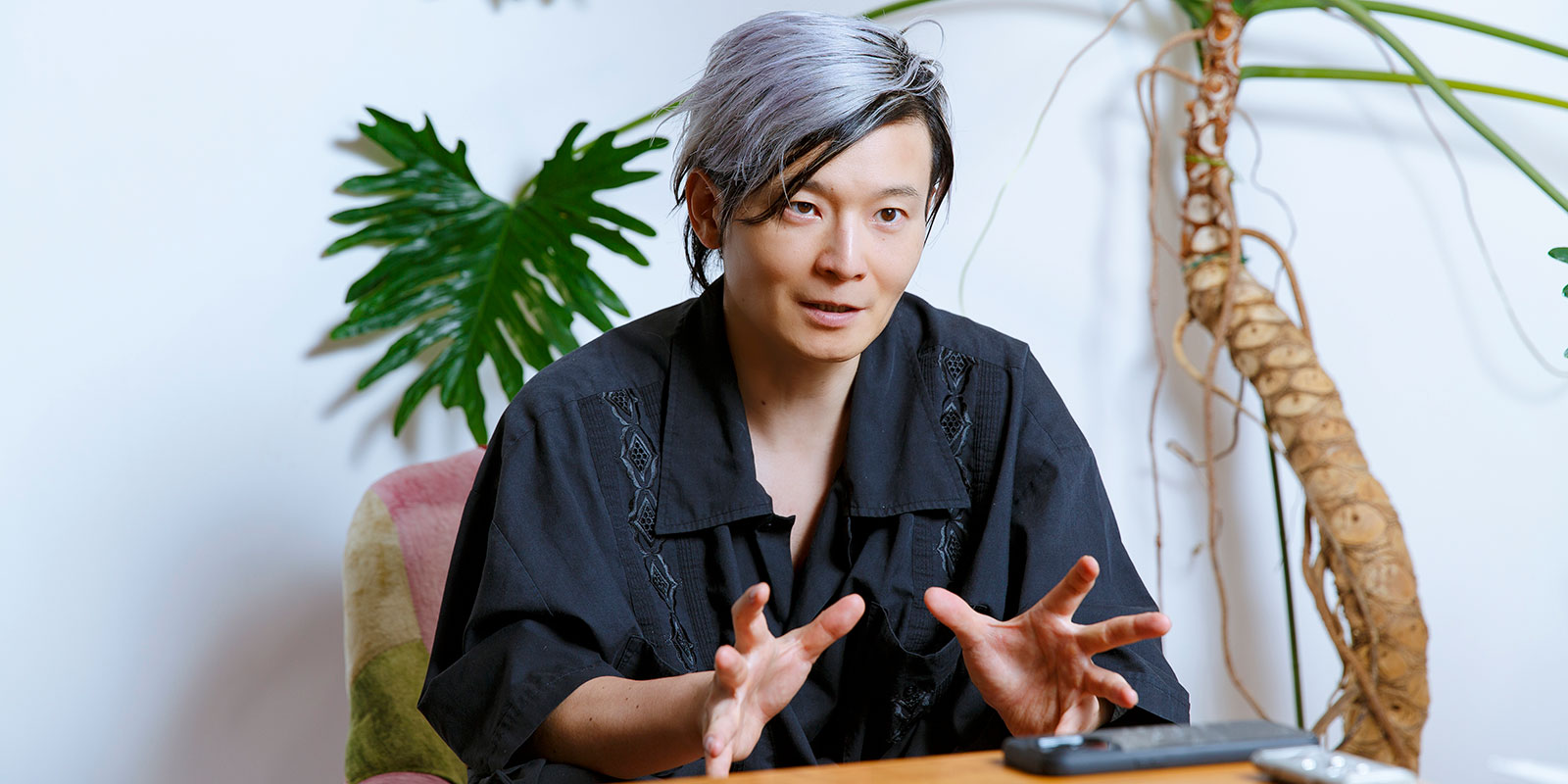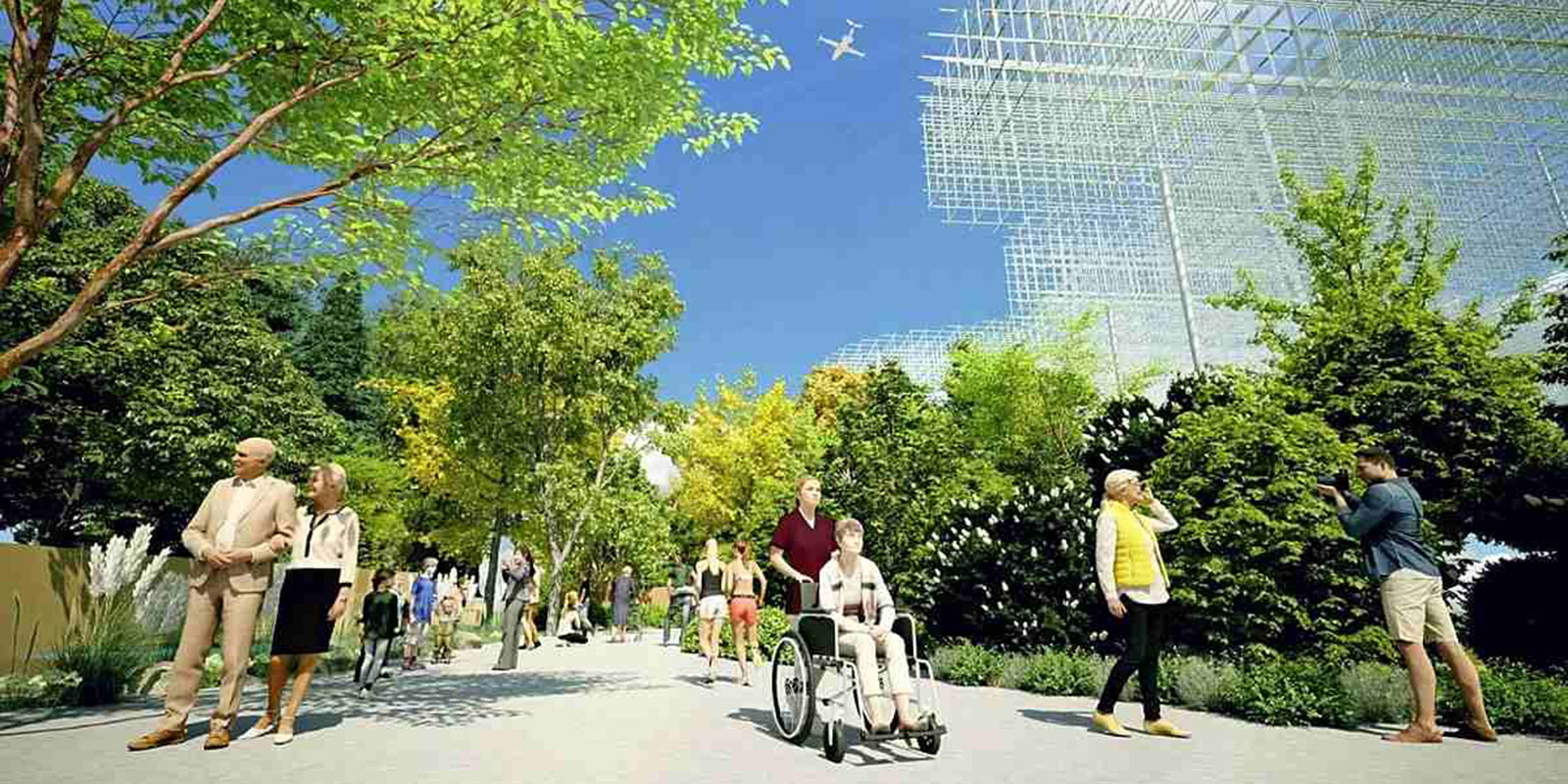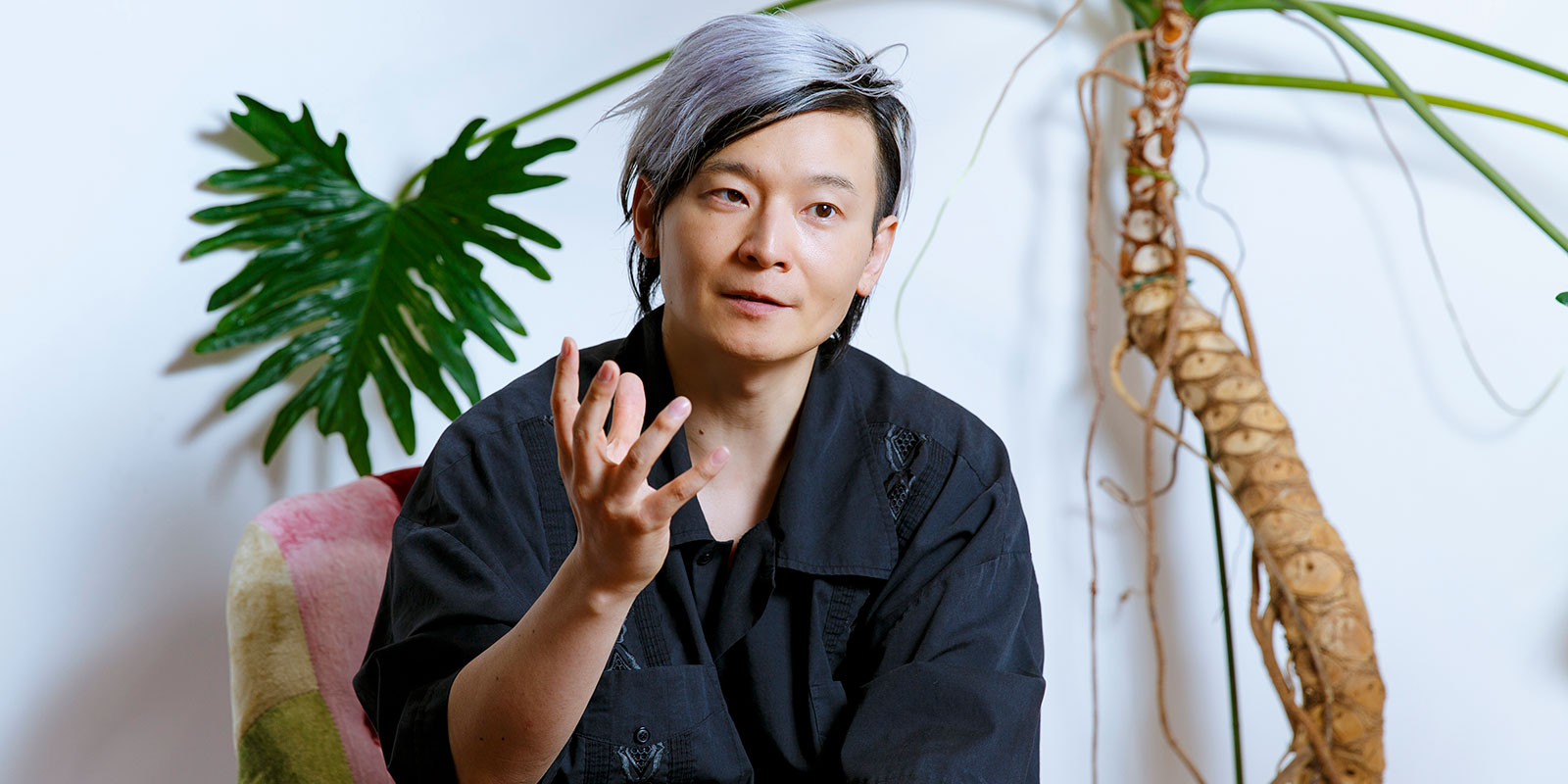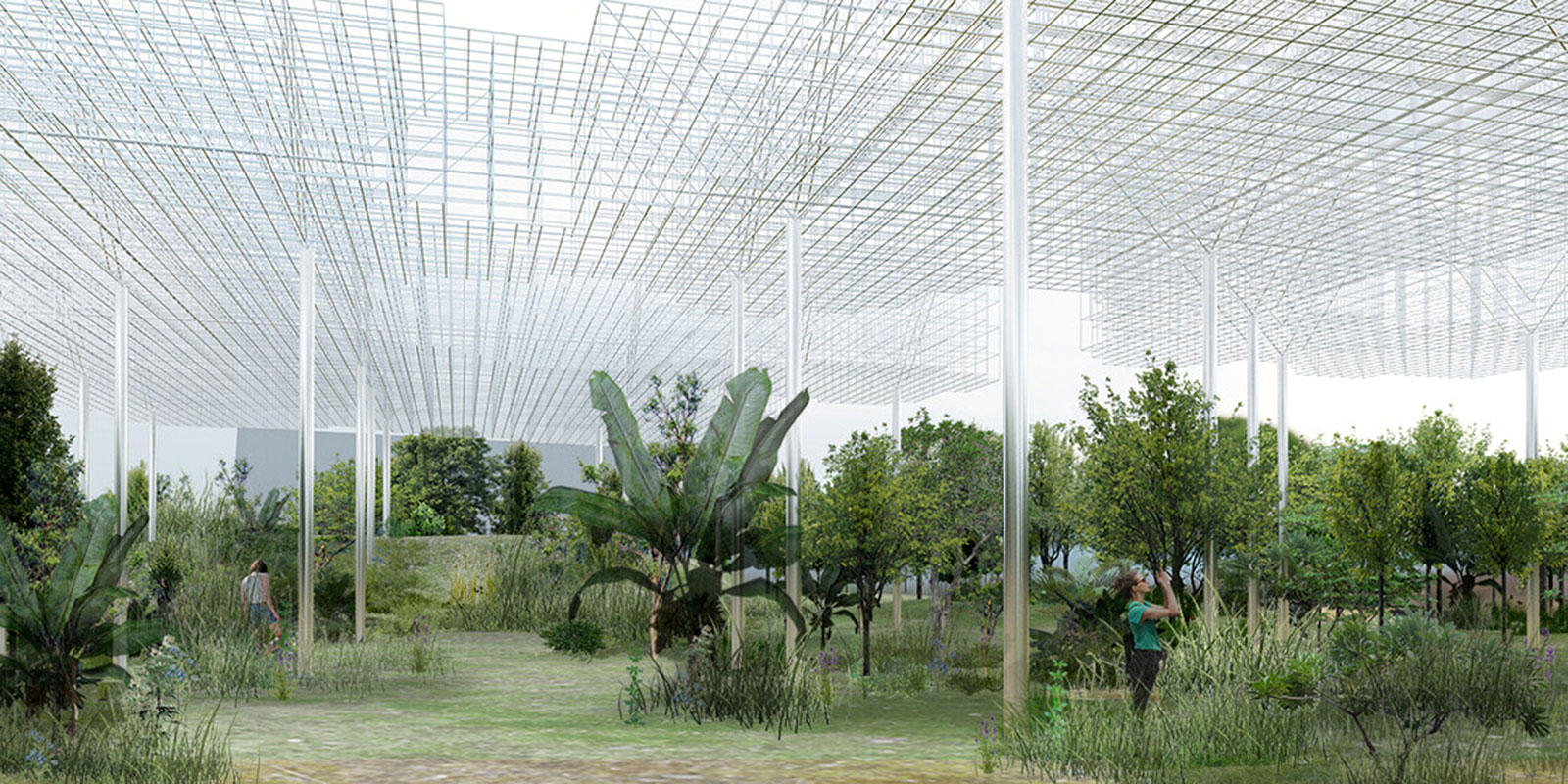A place of power
When invited to curate one of the signature pavilions for Expo 2025, Hiroaki Miyata saw an opportunity to bring the world together in divided times. He discusses his ambitions with Io Kawauchi
Expo 2025 Osaka, Kansai, Japan will feature eight signature themed pavilions. The organizers challenged their curators to aim high, bringing the most important ideas of our times to life in a physical space. Hiroaki Miyata, a data scientist, theorist of a community-based future, and the Professor and Chair of the Department of Health Policy Management at the Faculty of Medicine at Keio University, was not one to shy away from the test. His project, which combines an open-plan pavilion with a forest containing unique artworks, will emphasize the importance of respecting and appreciating diverse forms of life in modern society. Visitors’ experiences will be tailored according to data they provide, creating a world in which all life forms coexist in harmony, but where everyone’s unique traits are valued. He discusses his vision for both the pavilion and a better future.
What are you trying to achieve with your pavilion?
The theme of my pavilion is “Better Co-Being,” which means living together consciously. The key question is, what kind of future are we aiming for? Reinventing how we live is a key theme in my thinking. Our current era is one of change and this transformation has progressed with the emergence of the internet, smartphones, and social media. These technologies have rewritten existing industries and created new data-based ones. We are entering a phase where we are consciously creating new ways to live together.
How do the themes of the wider Expo tie in with that thinking?
The central question at the Expo is about the kind of future that can be envisioned when people from all over the world gather together. I believe that by each country [at Expo 2025] bringing and sharing its own vision of the future, being influenced by the visions of others, and discussing them, we can move toward a better future as a species.
 Hiroaki Miyata | Keisuke Tanigawa
Hiroaki Miyata | Keisuke Tanigawa
How does that thinking translate into the architecture of your pavilion, without walls or a roof?
The building is made of stainless steel, but it floats like a cloud on this grid. It’s very strange, like the space itself is melting away, being sucked into the sky. As we’re all living under the same sky, I thought it would be best to have people draw their own connections, so I created a seamless space with a forest at the center of the Expo. My discussions with the two members of [the architectural group] SANAA, made me realize that traditional architecture tends toward delineated spaces, clear boundaries between ownership and non-ownership, and demonstrations of a certain kind of power. But this time we are doing things differently.
“The challenge is to design experiences that move you regardless of who you are and where you come from”
 A rendering of the Expo pavilion | ©SANAA
A rendering of the Expo pavilion | ©SANAA
How did you feel when you saw the finished building?
I actually didn’t think it would turn out this well until it was almost done [laughs]. It’s several times better than I imagined. When I first entered the structure, I didn’t feel intimidated, but rather as if I was floating—a feeling of openness. I have so much respect for the SANAA team, and I think they did a wonderful job.
Yuko Hasegawa, director of the 21st Century Museum of Contemporary Art in Kanazawa, serves as the pavilion’s artistic curator. Could you describe your collaborative relationship with her?
I’m working with Hasegawa not only on the pavilion, but also on the forest around it. So she and I will be discussing what kind of artists we want to feature and what we are going to create. We will be discussing these things in the context of art, but also in the context of history, society, and geopolitics, and ponder what kind of questions we should be asking today.
 Hiroaki Miyata | Keisuke Tanigawa
Hiroaki Miyata | Keisuke Tanigawa
“When we think about our future, we should not limit ourselves to human achievements and instead place our visions in the context of the global ecosystem”
What role will the forest play?
Past Expos have all been based on placing an artificial object at the center, be it the Eiffel Tower, the Tower of the Sun in Osaka or the Dubai Expo’s magnificent facade. This time, through our discussions with [architect and Expo 2025 site design producer] Sou Fujimoto, we decided to center an ecosystem rather than a specific man-made object. That’s because when we think about our future, we should not limit ourselves to human achievements and instead place our visions in the context of the global ecosystem. Part of our efforts to think about the future involve recreating a plant-based ecosystem at the Expo. We don’t want to transplant plants forcibly, but rather to start with what’s already at the site and grow this ecosystem from there. I hope to place works of art in the forest that will serve as a trigger for people to think about the future.
The experience for visitors will be tailored based on data such as age and fatigue level. Does this tie in with your idea of a society based on the sharing of data?
The pavilion should provide an experience that is connected to the future. Data is what’s behind it, and it supports people’s diverse experiences. Rather than having everyone dream the same dream and aim for a single goal, we want to highlight the fact that people have different values and interests, they react differently to things and exhibit different feelings, so the experiences we provide should take that into account. The challenge is to design experiences that stay with you and move you regardless of who you are and where you come from.
 The pavilion will be surrounded by trees | ©SANAA
The pavilion will be surrounded by trees | ©SANAA
What can Japan contribute to the conversation over sustainability, which will be a major theme of the Expo?
The key is to present an attractive future that other countries can be convinced of. I believe our innovation needs to be based on that perspective. One thing we have learned over the past decade or so through efforts to achieve the [UN’s sustainable development goals] around the world is that providing support that gives people a sense of purpose in life is far more effective than sending aid only whenever an emergency arises. It is very important to keep the light of life burning, but it’s equally important to do this in a sustainable way, to make life worth living by protecting the conditions for culture. I hope that the Expo will offer an opportunity to share these ideas with the global community here in Japan.